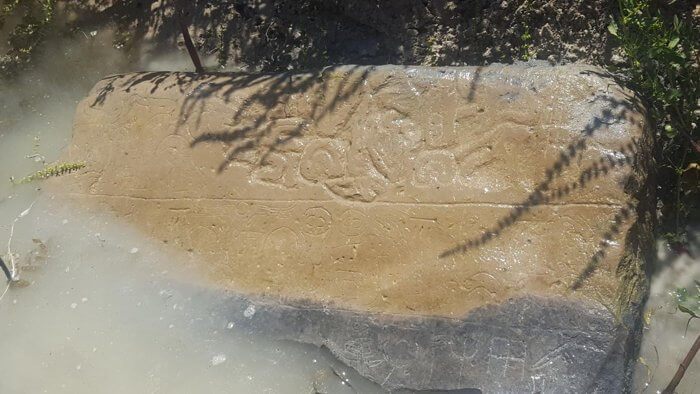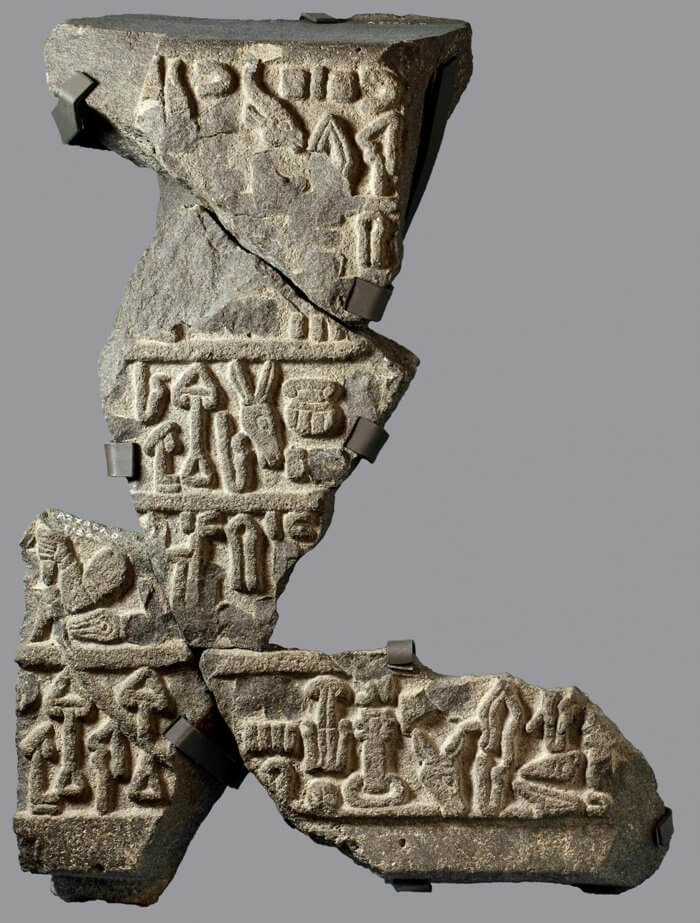 1
1

Arkaim and the texts of Rgveda about his builders
 25. 04. 2024
25. 04. 2024



 10. 03. 2020
10. 03. 2020

It was said that everything he touched had turned into gold. However, the fate of the legendary King Midas eventually came to an end, and it seems that a long-lost chronicle of his ancient fall has literally surfaced in Turkey. Last year, archaeologists explored an ancient cairn site in central Turkey called Türkmen-Karahöyük. The larger area, the Konya Plain, is full of lost metropolises, but scientists could not be prepared for what they were about to find.
A local farmer told a group of archaeologists that in a nearby recently extracted canal he discovered the existence of a large strange stone marked with some unknown inscription. "We saw it still coming out of the water, so we jumped straight down into the canal - to the waist, wading around," says archaeologist James Osborne of the University of Chicago. "It was immediately clear that it was ancient, and we recognized the script in which it is written: Luwian, the language used in this area in the Bronze and Iron Age."

Half-immersed stone with inscriptions from the 8th century BC.
With the help of translators, scientists found that the hieroglyphics on this ancient stone block - called the stele - boasted military victory. And not only by a military victory, but also by the defeat of Frygia, the Anatolian kingdom, which existed about 3000 years ago. The Royal House of Frygie was ruled by several different men called Midas, but the stele dating, based on linguistic analysis, suggests that the block hieroglyphics could refer to King Midas - the one from the famous "golden touch" myth. The stone markings also contained strange hieroglyphs symbolizing that the victory report had come from another king, a man named Hartapu. Hieroglyphs indicate that Midas was captured by Hartapu's forces. "The gods of the storm have given the kings his majesty," it says on the stone. It is important that almost nothing is known about King Hartapu or the kingdom he ruled. Nevertheless, the stele suggests that the giant mound of Türkmen-Karahöyük may have been the capital of Hartap, and in its heyday it stretched to about 300 hectares, at the heart of the ancient conquest of Midas and Frygie.
"We had no idea about this kingdom," says Osborne. "In a flash, we received new in-depth information about the Iron Middle East."

Luwian inscriptions uncovered on a stone from a nearby excavation.
Much more digging is needed on this ongoing archaeological project, and the results so far should be considered preliminary for the time being. The international team is eager to revisit this site this year to find out anything else about the kingdom, seemingly lost in history. "There will be palaces, monuments and houses inside this mound," says Osborne. "This stele was an amazing, incredibly happy find - but it's just the beginning."
Church in the past she often referred to as heretical everything that didn't fit their power scripts. Despite all efforts to suppress the spread of unwanted thoughts, new ones have emerged religious streamswhich later influenced the development of society in Europe.